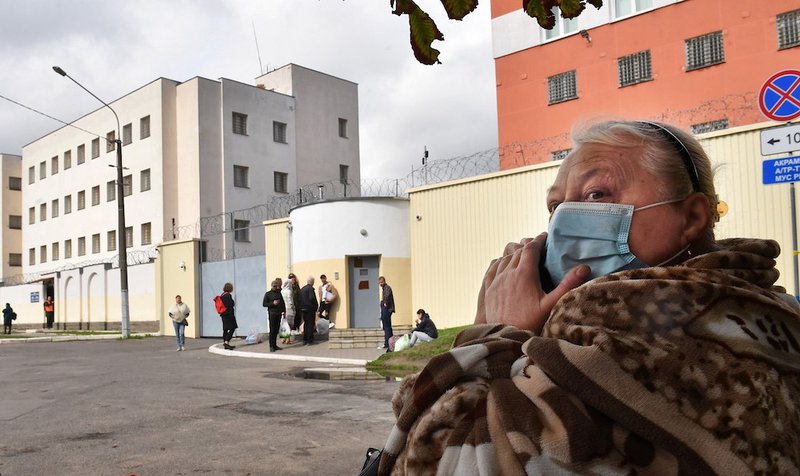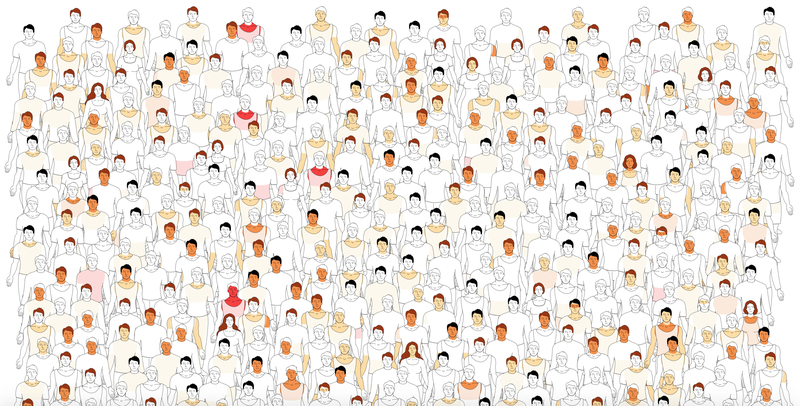Study finds evidence of neurobiological mechanism for hallucinations and delusions
A new study from researchers at Columbia University Vagelos College of Physicians and Surgeons has found evidence of a potential neurobiological mechanism for hallucinations and delusions that fits within the hierarchical model of psychosis and can explain their clinical presentation.
The study was published in eLife.
Columbia researchers Kenneth Wengler, PhD, a Postdoctoral Research Fellow and Guillermo Horga, MD, PhD, Florence Irving Associate Professor of Psychiatry, investigated the neurobiological mechanisms of two symptoms of schizophrenia: hallucinations and delusions. These two symptoms form the syndrome of psychosis, an immensely disabling psychiatric condition where patients lose their ability for reality testing.
"Typically, patients with more severe hallucinations also have more severe delusions, and these two symptoms respond similarly to antipsychotic medications. But this is not always the case; some patients have very prominent hallucinations but less severe delusions and vice versa," says Wengler. "This suggests that these symptoms may share a common neurobiological mechanism while simultaneously depending on symptom-specific pathways."
Some experts in the field believe that a hierarchical perceptual-inference model can explain the mechanisms behind psychosis. Wengler explains, "In its simplest form, the hierarchical model has two levels to the hierarchy: low and high. The low level makes inferences about basic features of stimuli and the high level makes inferences about their causes. An intuitive example of this is inferring the weather. In this scenario, you must decide if you are going to take an umbrella with you when you leave the house. The stimulus in this scenario is what you see when you look out the window; let's say it's cloudy. The context in this scenario is what you expect the weather to be like on a given day in the city you are in; let's say you are in Seattle. Although it is not currently raining, because it's cloudy and you are in a city where it often rains, you may decide to take an umbrella with you. The hierarchical model of psychosis frames hallucinations as resulting from dysfunction at the lower levels of the hierarchy and delusions as resulting from dysfunction at the higher levels of the hierarchy. Critically, these levels of inference are distinct but interconnected, so a dysfunction at one level would likely propagate upwards or downwards to other levels, therefore explaining why these symptoms tend to co-occur."
To investigate the neurobiological mechanisms of hallucinations and delusions within the framework of the hierarchical model, the researchers used functional magnetic resonance imaging to measure intrinsic neural timescales throughout the brain. These neural timescales reflect how long information is integrated in a given brain region. Most importantly, these neural timescales are organized hierarchically, making it a fitting measure to test the hierarchical model of psychosis.
The researchers collected data from 127 patients with schizophrenia from various online databases and determined how an individual's neural timescales related to their hallucination and delusion severities together. They found that neural timescales in the lower levels of the hierarchy tended to be longer in patients with more severe hallucinations, while neural timescales in the higher levels tended to be longer in patients with more severe delusions. These results provide the first direct evidence of a potential neurobiological mechanism for hallucinations and delusions that fits within the hierarchical model of psychosis and can explain their clinical presentation. The common neurobiological mechanism for both symptoms could result in increased neural timescales, but the symptom-specific pathways are the level of the hierarchy at which the neural timescales are increased. "Our findings open the door for the development of treatments to target specific symptoms of psychosis depending on an individual subject's symptom profile, in line with the current push for individualized medicine," says Horga.
The paper is titled "Distinct Hierarchical Alterations of Intrinsic Neural Timescales Account for Different Manifestations of Psychosis."
###
Additional authors are Andrew Goldberg (New York State Psychiatric Institute, New York, NY) and George Chahine, MD (Yale University, New Haven, CT).
The study was supported by grants from the
National Institute of Mental Health (R01MH117323 and R01MH114965).
The authors report no financial or other conflicts of interest.
The Columbia University Department of Psychiatry is among the top ranked psychiatry departments in the nation and has contributed greatly to the understanding and treatment of brain disorders. Co-located at the New York State Psychiatric Institute on the NewYork-Presbyterian Hospital/Columbia University Irving Medical Center campus in Washington Heights, the department enjoys a rich and productive collaborative relationship with physicians in various disciplines at the Columbia University Vagelos College of Physicians and Surgeons. Columbia Psychiatry is home to distinguished clinicians and researchers noted for their clinical and research advances in the diagnosis and treatment of depression, suicide, schizophrenia, bipolar and anxiety disorders, eating disorders, substance use disorders, and childhood psychiatric disorders.
Columbia University Irving Medical Center provides international leadership in basic, preclinical, and clinical research; medical and health sciences education; and patient care. The medical center trains future leaders and includes the dedicated work of many physicians, scientists, public health professionals, dentists, and nurses at the Vagelos College of Physicians and Surgeons, the Mailman School of Public Health, the College of Dental Medicine, the School of Nursing, the biomedical departments of the Graduate School of Arts and Sciences, and allied research centers and institutions. Columbia University Irving Medical Center is home to the largest medical research enterprise in New York City and State and one of the largest faculty medical practices in the Northeast. For more information, visit cuimc.columbia.edu or columbiadoctors.org.












